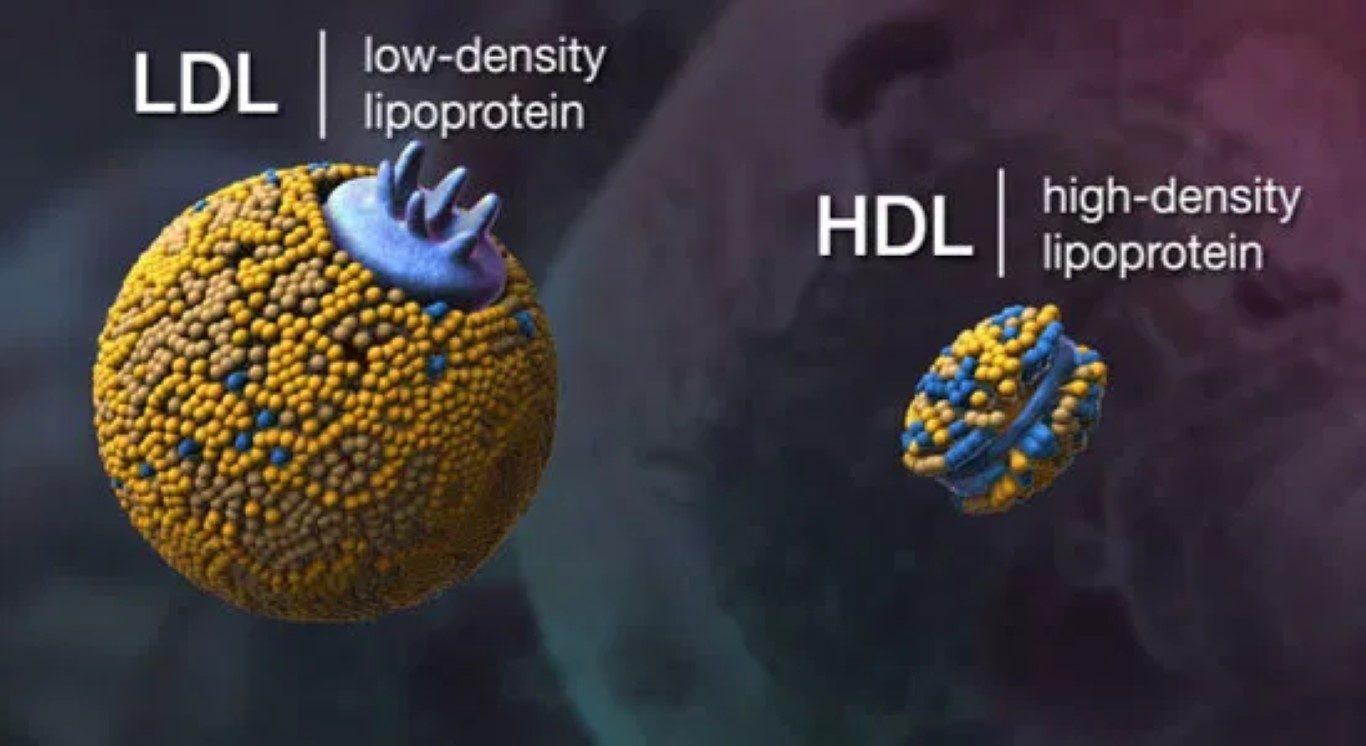Thomas Wood et al., the authors of the 2016 letter, do not disagree with the data presented by Mansoor et al. but disagree with their interpretation of it. Specifically, Wood et al. argue the sum of the evidence suggests the surveyed low-carbohydrate diets reduced cardiovascular disease (CVD) risk and any increase in risk associated with an increase in LDL cholesterol is inconsequential in the context of the other changes observed.
First, they argue LDL has limited usefulness as a marker of CVD risk. Mansoor et al. cite two papers from Ronald Krauss et al. to support their claim that an increase in LDL cholesterol is associated with elevated cardiovascular risk (1). These papers in fact make the opposite claim, arguing LDL cholesterol is a weaker marker of disease risk than available alternatives such as triglyceride levels and the TG:HDL ratio. Krauss et al. argue an atherogenic lipoprotein phenotype, independent of the total level of LDL cholesterol, consists of small, dense LDL particles; this state is correlated with high triglyceride and low HDL levels. For this reason, in a subsequent analysis, Krauss et al. argued against diets designed to lower saturated fat intake and increase carbohydrate intake (such as a low-fat diet), as these diets increase triglycerides and lower HDL (2).
Other lines of evidence further undermine the predictive value of LDL cholesterol. A large study of hospitalized CVD patients found half had "normal" LDL levels (<100 mg/dL), which suggests lowering LDL cholesterol is at best insufficient to reduce heart disease risk. A growing body of evidence, drawn largely from the pharmaceutical literature, indicates therapies directly targeting LDL suppression or HDL elevation may have little to no effect on cardiovascular outcomes, and the beneficial effects of certain drugs, such as statins, may be entirely unrelated to their effects on serum cholesterol levels (3).
More broadly, evidence suggests insulin resistance and hyperglycemia may more accurately predict cardiovascular risk than any of these lipid markers. Insulin resistance is an independent risk factor for CVD and predisposes the lipid profile toward the atherogenic phenotype described above — i.e., high triglycerides, low HDL, and small, dense LDL particles (4). By elevating triglyceride levels, insulin resistance and high-carbohydrate diets reduce the size of LDL particles and increase their time in circulation, which leads to increased glycation and oxidation of LDL particles (i.e., generation of glycLDL and oxLDL). These small, oxidized LDL particles are more likely to infiltrate the arterial wall, which may explain the link between increased insulin resistance and increased CVD risk (5). Insulin resistance also increases (and low-carbohydrate diets decrease) oxidative stress and inflammation, which are additional independent CVD risk factors (6).
Wood et al. conclude the lipid changes observed by Mansoor et al., alongside the reduction in insulin resistance consistently associated with carbohydrate restriction, indicate a reduction in cardiovascular risk among subjects consuming a low-carbohydrate diet. Their conclusion is similar to that of a previous meta-analysis that found a more comprehensive assessment of CVD risk factors indicated low-carbohydrate diets reduce risk (7). This indicates use of a low-carbohydrate diet should not be discouraged on the basis of its effect on cardiovascular risk. It also indirectly provides further support for the broader argument that LDL cholesterol is no longer a useful tool for assessing risk of heart disease, and judging the relative merit of potential treatments due to their effect on LDL cholesterol can lead to misguided conclusions.
Read the letter.
Notes
- Metabolic origins and clinical significance of LDL heterogeneity; Metabolic abnormalities: Triglyceride and low-density lipoprotein
- Saturated fats versus polyunsaturated fats versus carbohydrates for cardiovascular disease prevention and treatment
- How statistical deception created the appearance that statins are safe and effective in primary and secondary prevention of cardiovascular disease; Clinical benefit from pharmacological elevation of high-density lipoprotein cholesterol: Meta-regression analysis; Pleiotropic effects of statins; Cardiovascular risk in patients achieving low-density lipoprotein cholesterol and particle targets; Low-fat dietary pattern and risk of cardiovascular disease: The Women's Health Initiative Randomized Controlled Dietary Modification Trial; Multiple Risk Factor Intervention Trial. Risk factor changes and mortality results
- Insulin resistance and hyperglycemia in cardiovascular disease development; Metabolic syndrome: Focus on dyslipidemia
- Normal and oxidized low density lipoproteins accumulate deep in physiologically thickened intima of human coronary arteries; Plasma oxidized low-density lipoprotein, a strong predictor for acute coronary heart disease events in apparently healthy, middle-aged men from the general population; Circulating oxidized LDL is a useful marker for identifying patients with coronary artery disease; Susceptibility of LDL and its subfractions to glycation; Susceptibility fo small, dense, low-density lipoproteins ton oxidative modification in subjects with atherogenic lipoprotein phenotype, pattern B; Glycation, oxidation and lipoxidation in the development of the complications of diabetes: A carbonyl stress hypothesis; How do elevated triglycerides and low HDL-cholesterol affect inflammation and atherothrombosis?; The metabolic syndrome, circulating oxidized LDL, and risk of myocardial infarction in well-functioning elderly people in the health, aging and body composition cohort
- Dysfunctional high-density lipoprotein: An innovative target for proteomics and lipidomics; Comparison of low fat and low carbohydrate diets on circulating fatty acid composition and markers of inflammation; Dietary carbohydrate restriction induces a unique metabolic state positively affecting atherogenic dyslipidemia, fatty acid partitioning, and metabolic syndrome
- Dietary intervention for overweight and obese adults: Comparison of low-carbohydrate and low-fat diets




Comment: See also: